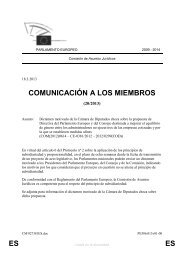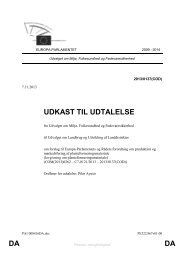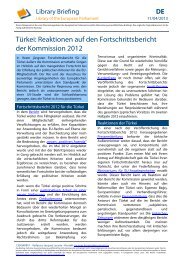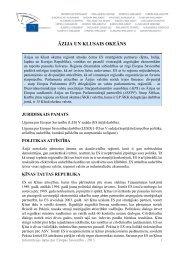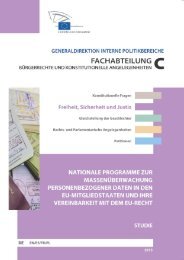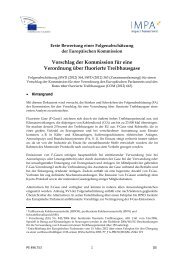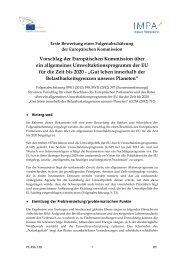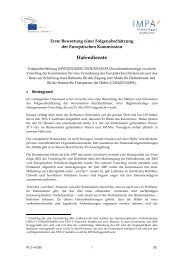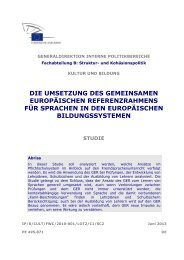PARLIAMENT AND DEMOCRACY - Inter-Parliamentary Union
PARLIAMENT AND DEMOCRACY - Inter-Parliamentary Union
PARLIAMENT AND DEMOCRACY - Inter-Parliamentary Union
You also want an ePaper? Increase the reach of your titles
YUMPU automatically turns print PDFs into web optimized ePapers that Google loves.
An accessible parliament I 75<br />
Nowadays such committees are usually reserved for the consideration of<br />
petitions indicating a general problem and supported by a large number of<br />
signatories. This is the case, for example, in Portugal, where ‘petitioners must<br />
be heard whenever a petition has over 2000 subscriptions’. In many countries,<br />
a more usual avenue for individual complaint today is through the office of an<br />
Ombudsman or Public Protector, whether accessed initially through a member<br />
of parliament or, more usually, directly by the complainant. Even in the latter<br />
case, it remains the responsibility of parliament to provide and supervise the<br />
framework by means of which the rights of the public can be protected.<br />
Originating in Scandinavia, the position of Ombudsman or Public Protector<br />
has emerged as a widely established avenue for individual complaint against<br />
the actions of public authorities. While the remit of the office differs from<br />
country to country, it typically investigates actions of public bodies which<br />
involve an infringement of human rights, abuse of office or other maladministration.<br />
After receiving a complaint from a member of the public, the<br />
Ombudsman will be empowered to investigate it, and where appropriate to<br />
seek redress for the complainant and/or a change in the institutional practice<br />
that led to the complaint. Although decisions of the Ombudsman in most<br />
countries are not binding, they have considerable authority; and it has been<br />
argued to be an advantage that they avoid the adversarial approach of the<br />
courts and allow for greater flexibility in the remedies and changes in administrative<br />
procedure that can be recommended. Here are two brief accounts of<br />
the establishment of an Ombudsman’s office, from Ireland and Argentina<br />
respectively:<br />
Ireland: Up to the 1960s, citizens seeking redress generally went to<br />
Parliament (or the Petitions committee of Parliament) or to the Courts.<br />
The complexities of the modern State, the domination of Parliament by<br />
Government, the delays and expense involved in going to Court and the<br />
growing alienation of citizens from all these institutions, led to the<br />
emergence in the 1960s and 1970s of the latter day Ombudsman, a<br />
variation of an office which had existed for many years previously<br />
in Sweden and Finland. Denmark was first, followed by New Zealand<br />
and Britain and Northern Ireland. The Irish model as set out in the<br />
Ombudsman Act, 1980, was greatly influenced by these countries……While<br />
the number of complaints each year is small relative<br />
to the millions of individual decisions taken annually by our public service,<br />
the activities of the Office, undoubtedly, have a cautionary effect<br />
on public bodies and an influence on their decisions. (Kevin Murphy,<br />
former Ombudsman).




